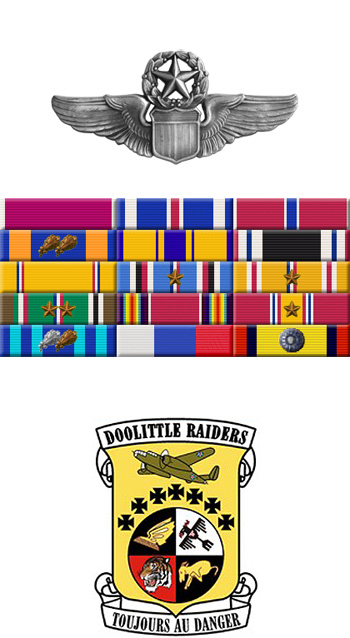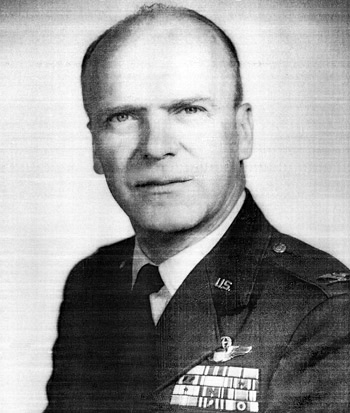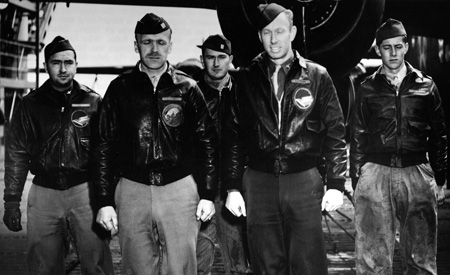
|
Edward J. York |
 |
|||
| Rank, Service | ||||
Colonel O-6, U.S. Air Force |
||||
| Veteran of: | ||||
|
||||
| Tribute: | ||||
Edward York was born on August 16, 1912, in Batavia, New York. He enlisted in the U.S. Army on July 30, 1930, and served in the Infantry until he entered the U.S. Military Academy at West Point in June 1934. York graduated and was commissioned a 2d Lt in the U.S. Army Air Corps on June 14, 1938, and then attended pilot training, earning his pilot wings in May 1939. His first assignment was as an A-17 and B-18 pilot at March Field, California, from August 1939 to June 1940, followed by service at McCord Field, Washington, as a B-23 and B-25 pilot until June 1941. York then served as a B-25 pilot at Pendleton, Oregon, where he was selected to participate in the Doolittle Raid in February 1942. Capt York was the pilot on the eighth B-25 to take off from the aircraft carrier USS Hornet on April 18, 1942, and after bombing its assigned targets in Japan, the crew landed their aircraft in neutral Russia, where they were interned until escaping in May 1943. After his return to the United States in late June 1943, York trained in B-25 Mitchell, B-24 Liberator, and B-17 Flying Fortress bombers before being assigned to the 483rd Bomb Group in Italy, where he flew combat missions between March and June 1944. York served as an Air Inspector at Randolph AFB, Texas, from August 1944 to June 1945, and then served as Air Attache to Poland from July 1945 to December 1946. He served as Commandant of the Air Force Officer Training School at the San Antonio Aviation Cadet Center (later renamed Lackland AFB), Texas, from March 1947 to April 1948, and then served as Air Attache to Denmark from August 1948 to February 1950. Col York then remained in Denmark to serve as Chief of the Air Force Section for the Military Assistance Advisory Group in Copenhagen, Denmark, from February 1950 to June 1951, when he returned to the U.S. and attended Air War College at Maxwell AFB, Alabama. He graduated in June 1952 and then became Chief of the Air Attache Branch at Headquarters U.S. Air Force in the Pentagon, where he served until June 1955. From June 1955 to August 1958, Col York served as Deputy Chief of Staff for Plans at Headquarters Military Air Transport Service at Andrews AFB, Maryland, followed by service as Chief of Staff for Headquarters Western Transport Air Force at Travis AFB, California, until August 1960. His next assignment was as the commander of an ICBM Site Activation Task Force at Larson AFB, Washington, from August 1960 to November 1962. Col York served as Chief of Staff at Headquarters U.S. Air Force Security Service at Kelly AFB, Texas, from November 1962 to June 1966, and then served as Deputy Commander at Headquarters U.S. Air Force Security Service from June 1966 until his retirement from the Air Force on September 2, 1966. Edward York died on August 31, 1984, and was buried at the Fort Sam Houston National Cemetery in San Antonio, Texas. |
||||
|
||||


